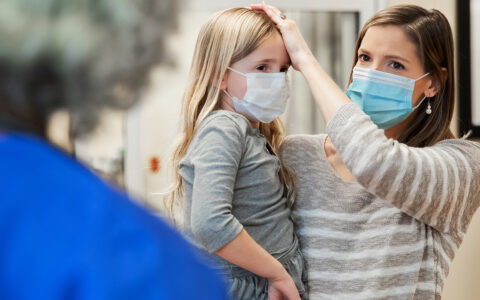The pneumococcal conjugate vaccine (PCV13), or Prevnar 13®, is associated with reduction in socioeconomic disparities and the near elimination of Black-white racial disparities for invasive pneumococcal disease (IPD), according to new research in The Journal of Infectious Diseases.
“We found that disparities with regards to race and socioeconomic status all decreased dramatically with the introduction of PCV13,” said Rameela Raman, Ph.D., first author on the study and an associate professor in the Department of Biostatistics at Vanderbilt University Medical Center. “This can be considered as a major public health success.”
The study is the first to examine the effect of PCV13 on socioeconomic health disparities, in particular.
“We found that disparities with regards to race and socioeconomic status all decreased dramatically with the introduction of PCV13.”
Assessing Health Disparities
The bacterium Streptococcus pneumoniae is the main cause of community-acquired pneumonia and meningitis in children and the elderly. Other IPDs include infections of the heart, brain, bloodstream, bones and inner lining of the abdomen.
In 2000, a 7-valent pneumococcal conjugate vaccine (PCV7) was included in routine vaccination for children, and in 2010, the broader spectrum 13-valent pneumococcal conjugate vaccine (PCV13) was introduced. Both vaccines have been highly effective at preventing IPD.
To assess the impact of vaccination on racial and socioeconomic disparities in IPD incidence, Raman and colleagues examined neighborhood-level socioeconomic information and individual-level data collected from 20 Tennessee counties participating in the CDC’s Active Bacterial Core surveillance (ABCs) program. These counties represent approximately 55 percent of Tennessee’s population.
Before the introduction of either vaccine (1998-1999), the incidence of PCV13-serotype IPD in these counties was 1.47 times greater in Blacks compared to whites: 17.3 cases per year per 100,000 people versus 11.8, respectively. Post-PCV13 (2011-2016), the incidence of PCV13-serotype disease was greatly reduced in both groups: 2.2 for Blacks and 2.7 for whites.
The study also found that, in years prior to the introduction of either vaccine, the incidence of PCV13-serotype disease in high poverty neighborhoods was 2.9 times the incidence in low poverty neighborhoods: 17.8 and 6.4, respectively. Post-PCV13, the incidence of PCV13-serotype disease in high poverty neighborhoods was reduced to 2.2 times that of low poverty neighborhoods: 3.1 and 1.4, respectively.
Socioeconomic Status
The socioeconomic information integrated into the study was sourced from publicly available data from the U.S. Census Bureau. “There’s a lot of information that we are able to gain from merging together publicly available data along with administrative-level data,” Raman said.
Capturing data about socioeconomic status firsthand can be challenging, Raman explains. “People often do not feel comfortable revealing, for example, their household income. Even if they do, it might be biased. Moreover, we do not have enough resources to collect information on all the variables of interest,” she said. “That’s why publicly available databases, such as the Census data, are awesome resources.”
Raman and colleagues utilized census tract-level information for the study, which is a smaller, more homogeneous unit compared to other geographical units, like county-level data. “A census tract is a geographical unit consisting of approximately 3,000 to 4,000 people, providing much more granular and homogenous data than ZIP code or county data,” Raman said.
A Public Health Success
Raman is excited by the success of pneumococcal vaccination. “For vaccines and the education around them, when you target specific geographical areas, you can improve health in a dramatic way,” she said. “Understanding how IPD and other diseases affect different people across socioeconomic status is extremely important so that we can target resources and education.”
“Understanding how IPD and other diseases affect different people across socioeconomic status is extremely important so that we can target resources and education.”
Raman and colleagues are eager to further assess the effectiveness of PCV13 vaccination across the U.S. by analyzing data from all sites participating in the ABCs program.
“Rather than looking at univariate associations, like we have done in this paper, we plan to use a multivariable regression model where we can evaluate, for example, after controlling for a person’s age and race, how much socioeconomic status influences disparities in hospitalizations with this disease.”





